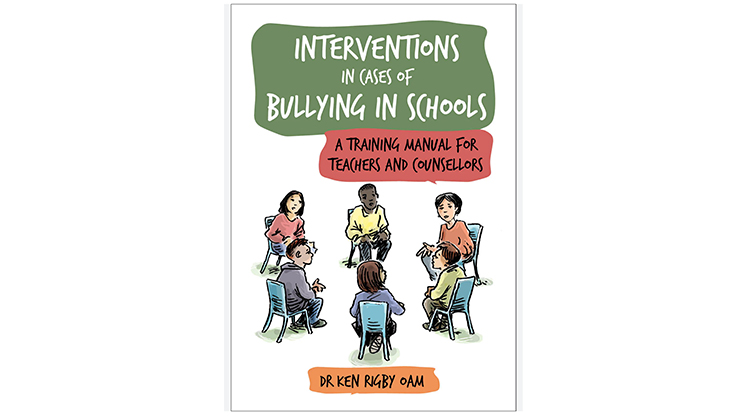Ken Rigby - Interventions in Cases of Bullying in Schools. A Training Manual for Teachers and Counsellors

When we know that the number of children in Australia that are bullied in school on any particular day, would fill the iconic Melbourne Cricket Ground - MCG, then Australia has a very significant challenge. This bullying interventions training manual for teachers and school leaders is an absolute necessity for every school, addressing critically important needs - safe and supportive schools. The brief booklet enables time poor school teachers and leaders in schools to easily read it and apply it. It utilises the most effective bullying interventions from around the world that have been tried and tested. Author Ken Rigby has spent a lifetime researching, testing, and applying the most effective interventions in Australian schools. This is a really useful practical step by step simple and easy to understand approach, guiding schools in choosing and applying the most effective method or combination of methods to address various types of bullying. One intervention has never fitted all types of bullying.
Practical tools based on evidence informed best practice are included. An example is the Recording Form to use, not only as a checklist regarding the processes in addressing bullying but also very useful records if legal action is taken against a school. When bullying actions are regarded as criminal, Rigby discusses the importance of appropriate legal sanctions. Another example is the School Anti Bullying survey link, as well as a page of suggestions about what your school could include. These are gold for time poor schools.
At the most basic level this guide clearly defines what bullying is and isn’t, so vitally important for all concerned so that everyone in a whole school community has a common understanding. Addressing bullying in a school is everyone’s business and students creating art works clearly defining what is and isn’t bullying sends powerful messages when displayed around the school and included in anti bullying and prevention resources.
Our organisation continues to be staggered by the stunned silence when working in schools everywhere across Australia when we ask, “Can anyone here please tell me the top most effective bullying interventions to use in schools?” As someone who has delivered bullying interventions for approximately twenty-five years in many states and territories across Australia, l have been very fortunate to be trained by international and Australian leading experts in this field such as Ken Rigby and Donna Cross. Ken has done an outstanding job of resourcing schools with best practice in this short and concise training manual for teachers and school leaders. No longer can schools use the excuse ‘We don’t have time to use these interventions.’ This brief guide has something for every teacher and school leader that strengthens their core business and their relationships across the school community, especially with students.
The exercise in this Training Manual on selecting a particular intervention method gets staff thinking about the possible best approach or combination of approaches to resolve bullying. Excellent activities for schools to apply include those doing the bullying, the recipient, bystanders and affected parents. For those who want more evidence and further resources, Ken also guides you to those resources.
A comprehensive list of interventions as provided in this brief training manual is unique and much needed in Australian schools if bullying is to be effectively addressed and our daily filling of the MCG full of students being bullied is to reduce. Australia is a signatory to the United Nations Convention on the Rights of the Child (1989) – ‘The importance of protecting children’s quality of life and their rights to be educated in a safe environment, free from all forms of violence, victimisation, harassment and neglect.’ Addressing group, as well as individual bullying is important, as is addressing face to face and cyber bullying, which Ken also discusses. The importance of an open non-judgmental attitude is emphasised, as is the need for clear evidence and care for all concerned in effectively resolving bullying. Providing access to a school anti bullying policy, including key suggestions of what could be included, provides schools with invaluable guidance in comprehensively addressing bullying. This training manual for schools is an absolute must. I shall certainly look forward to promoting its use in all the school wellbeing training we provide.